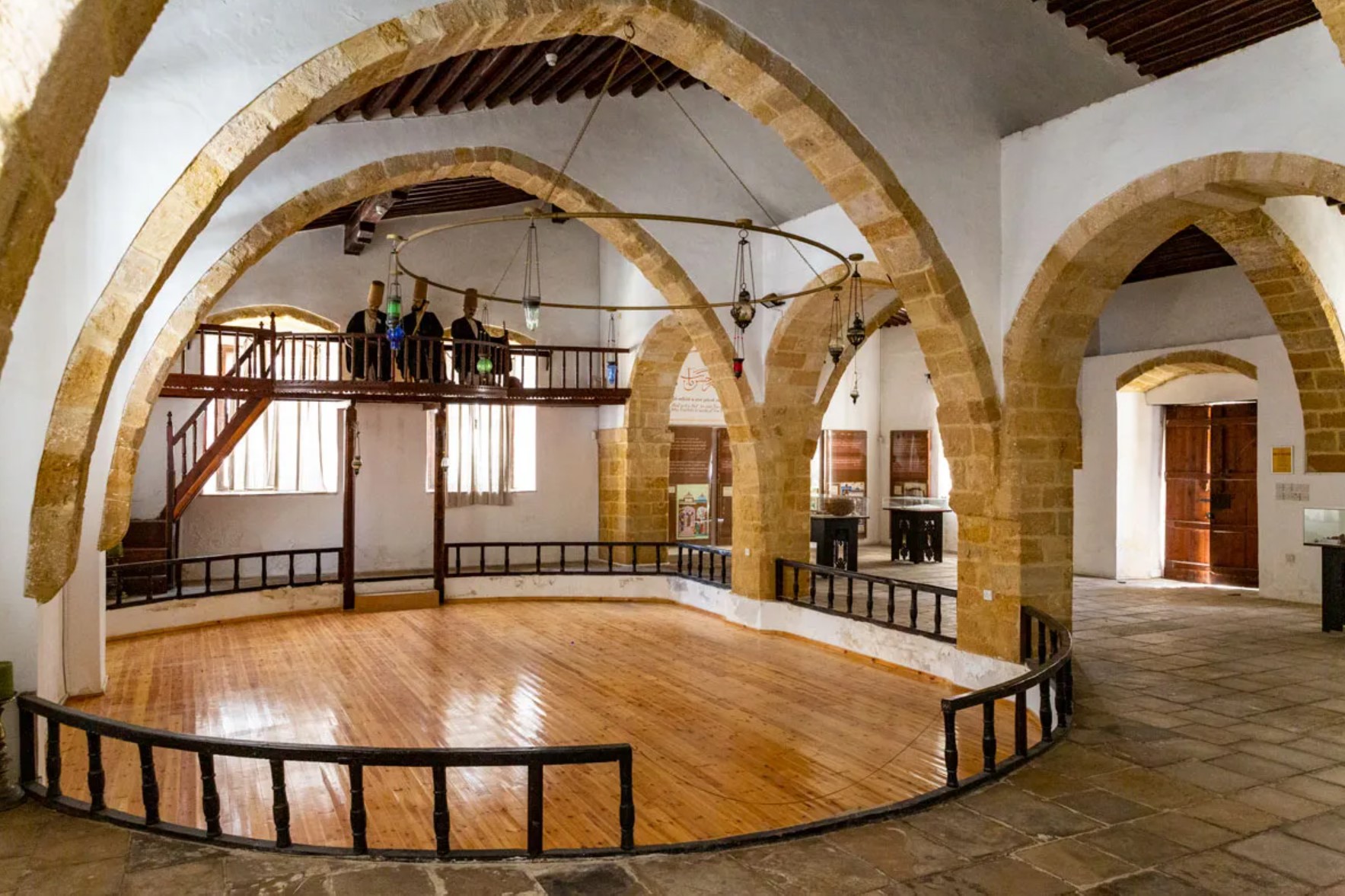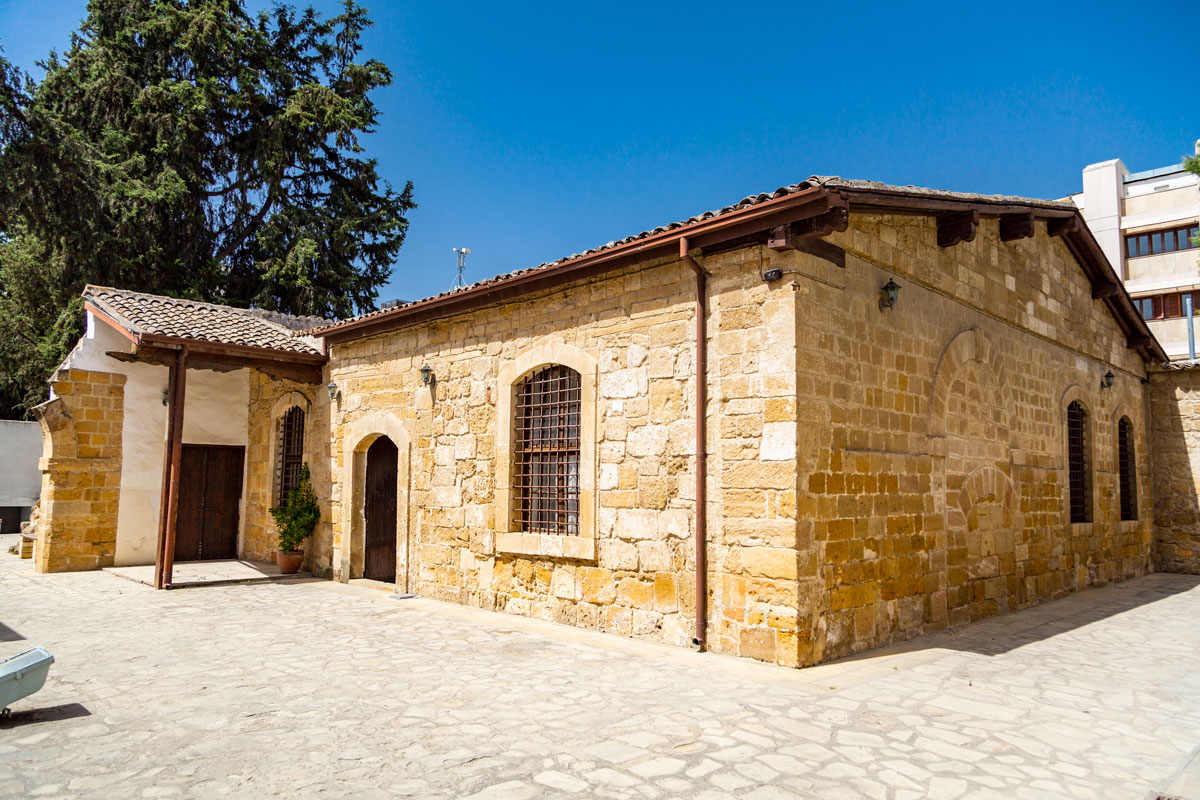


A Sufi order that originated in Konya in modern-day Turkey, the Mevlevi Order was founded by the followers of the 13th-century Persian poet, Sufi mystic, and Islamic theologian known as Celaleddin Rumi or more commonly Mevlana. The mystical philosophy that he expressed in his poetry and bequeathed to the Mevlevi order spread east from Konya, as far as India and then throughout the entire Islamic world. His teachings emphasized the individual soul’s separation from God during earthly existence, and the power of divine love to draw it back to the infinite on death.
Rumi stressed music and dance as an expression of this mutual love and yearning and so the Mevlevi followers became commonly known as the ‘whirling dervishes’ due to their famous practice of continuously revolving as a form of remembrance of God. It is traditionally held that the present building or ‘Mevlevihane’ is an enlarged continuation of previously established tekkes known as the Arab Ahmed Pasha and Ferhad Pasha Tekkes, constructed in 1593 and 1607. The Mevlevi Tekke was built in the early 17th century, on a piece of land donated by a landlady called Emine Hatun. When tekkes in Turkey were closed as a part of Ataturk’s Reforms in 1925, some in the Turkish Cypriot community demanded the closure of the tekke. However, this call was disregarded by the British administration of the time, and since the center of the Mevlevi Order had moved from Konya to Aleppo, it thus decided to appoint a sheikh from Syria.
The first such sheikh was Muhammed Selim Dede from Damascus, appointed in 1933 and who remained in position until his death in 1953. This however marked the beginning of the end of an era in which the whirling dervishes here performed their sacred dance the “sema” and the tekke finally ceased operation in 1954, the Mevlevi Order in Cyprus itself officially ceasing to exist from April 1956. After remaining closed for several years, the Tekke was reopened in 1963 as the ‘Turkish Cypriot Museum of Ethnography”. On 17 December 2002, after extensive repairs it became the Mevlana Museum, opened on the anniversary of his death, or “union with the beloved” as is the case in Sufi tradition.
When it was first built, the Mevlevihane included a complex of buildings and extensive grounds. A kitchen provided food for the poor of the city, permanent accommodation was made available for dervishes, and guest rooms for visitors. The inner courtyard was an area for contemplation, surrounded by an orchard in which almonds, pomegranates, and figs offered fruit. An ancient well dating to the Venetians and a reservoir provided water to a fountain where ablutions would be taken, the Islamic procedure for cleansing parts of the body. Today, the Mevlevihane is entered through an arched doorway, above which an Ottoman inscription informs visitors they have arrived at the house of Mevlana. Behind the entrance is a courtyard in which exquisitely carved examples of Ottoman tombstones are displayed.
Ottoman in style, these stones have been collected from various locations in Cyprus, dating from the 18th century onwards. To the right, one of the surviving buildings open to visitors is the semahane, the auditorium used for the whirling sema rituals, and the mihrapor niche in the wall indicating the direction of Mecca. Along the northern wall is a wooden balcony where the accompanying musicians once performed. The beams of the wooden ceiling of the semahane rest on two square columns and a series of arches divide the room into two sections. The first contains an exhibition of Rumi’s greatest poem the Mesnevi, alongside a display of musical instruments, costumes worn by the dervishes when they danced, and various other reproductions and illustrations. The other is an exhibit of the only remaining dervish cell in which cooking utensils, a table, and other objects used are displayed. The southwest doorway of the semahane next to the mihrab leads to the chamber in which the sheiks of the Mevlevihane lie buried. A total of sixteen unmarked tombs rest beneath six glorious domes, extending south along Kyrenia Street. Photographs of some of the sheiks, manuscripts, and various other items are displayed on the walls, while the tombs themselves are covered in embroidered textiles.
